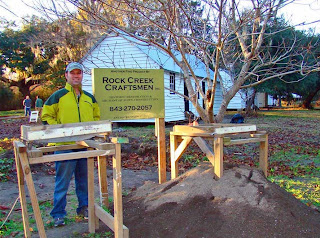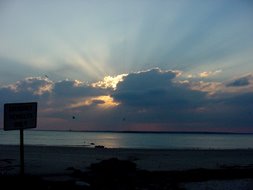Slave Cabin Row Restoration Project at Magnolia Plantation and Gardens 2008
Magnolia Plantation and Gardens has completed restoration work on 5 slave cabins at "Slave Cabin Row". 
On a recent plein air painting trip, I was given a tour of the site by Kevin Meek, owner of Rock Creek Craftsmen. His company has restored the cabins at Magnolia to show the evolving story of enslaved Africans and later freedman living in the structures from the Colonial period up to recent history (1969). Click here for more news coverage of the project.
Each of the cabins on Slave Cabin Row has been restored to demonstrate the building materials and living conditions of a different historical period. Magnolia Plantation is the only Lowcountry Historical site that has cabins showing the changing conditions of the workers and buildings as life on the plantation changed over time.
Magnolia Plantation is the only Lowcountry Historical site that has cabins showing the changing conditions of the workers and buildings as life on the plantation changed over time.
Sean Connolly, Project Manager and Kevin Meek discuss work at two of the "older" period cabins.
Connolly, Meek, and Project Technician Kate Fowler are pictured by the Leach Family cabin.  Members of the Leach family (click here for photo's of the Leach family) lived in this cabin until 1969. The oral history from members of the Leach family who are still working at Magnolia Plantation will be included in the historical interpretation of the site.
Members of the Leach family (click here for photo's of the Leach family) lived in this cabin until 1969. The oral history from members of the Leach family who are still working at Magnolia Plantation will be included in the historical interpretation of the site.
At this time the cabins are unfurnished, but the project includes plans to add historic objects to at least one of the buildings.
I, along with other exhibiting members of the Charleston Artist Guild, have been invited to create new paintings of the winter garden to exhibit during the 2009 Winter Garden Festival in the Plantation Gallery and Gift Shop.
The restoration project unearthed an artifact of particular interest. A handcrafted 14 caret gold object about the size of a cuff link was found in an area where the oldest cabins once existed.
The artifact may have had various uses, possibly as an earring. The owner of the gold artifact is a mystery as is it's origin. Here are photos of my mortar and pestle and spinning wheel (circa 1800) in the cabin. Both are similar to those which would have been used on the plantation in the Colonial Era.
Here are photos of my mortar and pestle and spinning wheel (circa 1800) in the cabin. Both are similar to those which would have been used on the plantation in the Colonial Era.
I think they add an interesting element to the story about the lives of the people who lived on Slave Cabin Row at Magnolia Plantation and Gardens. For information about the restoration work of former slave cabins at Friendfield Village click here.

4 comments:
Wonder if Friendfield Plantation in Georgetown, SC will also restore it's "Slave Street" cabins now that it's known that our new First Lady, Michelle Obama"s great-great-grandfather lived there as a slave before the Civil War?
That would be a significant historical restoration project.
Where did you get your spinning wheel? Is it in working condition?
My husband inherited it many years ago from his grandparents. It's carved with his initials DS and dated 1806.
It does work by using a foot pedal to turn the wheel, but so far I haven't been able to get him to use it to spin any yarn :).
Post a Comment